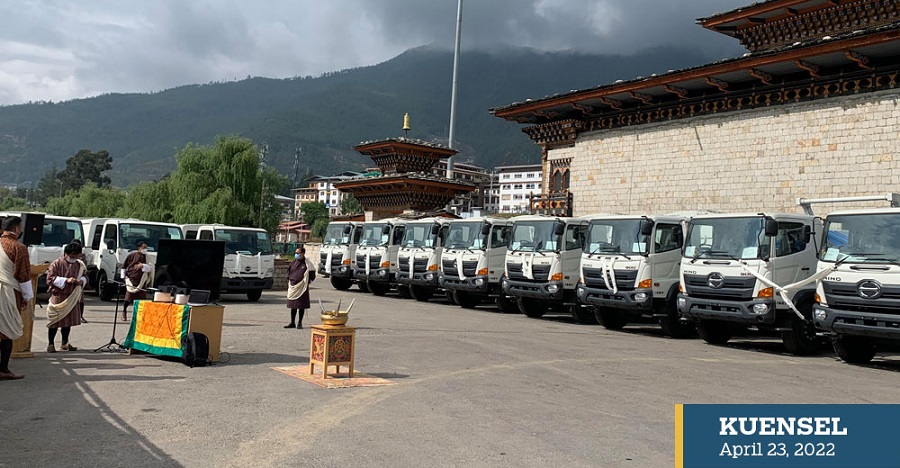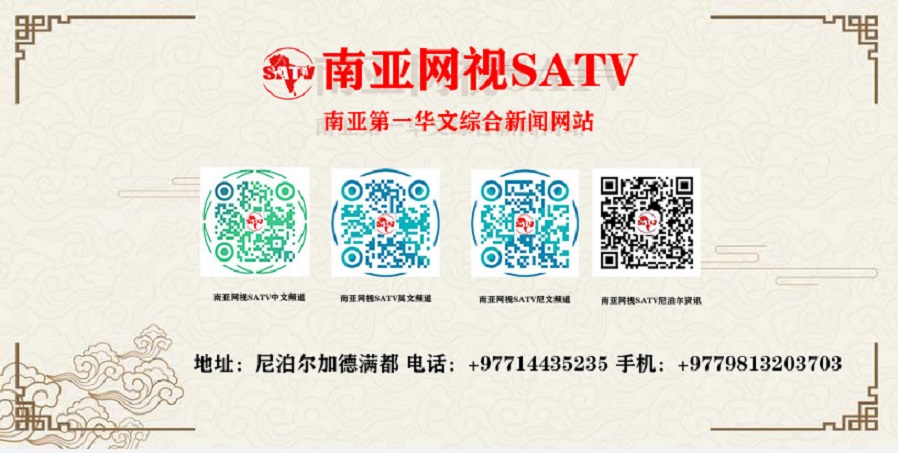
There was hope and optimism in the spring air to the waste problem when Foreign Minister Tandi Dorji and Thimphu Thrompon Ugyen Dorji tried their hands on the newly acquired waste utility vehicles the Japanese government donated.
To improve waste collection, the government and people of Japan provided 28 compactor trucks, three dumper placer, two backhoe loaders, an excavator and a bulldozer, and 24 containers worth Nu 330 million to four thromdes.
Thimphu thromde received 17 compactor trucks, 24 containers, three container carriers and a bulldozer. Phuntsholing got five compactor trucks and an excavator. Samdrupjongkhar got two container trucks and a backhoe loader. Gelephu received four container trucks and a backhoe.
The contribution is part of a project to improve solid waste management under the Grant Aid Project with the Japanese government. The trucks are especially designed for Bhutan by Toyota Tsusho.
The big question is will it solve the mounting waste problem?
A detailed preparatory survey conducted by a Japanese consulting team along with officials of the four thromdes found out that waste collection ratio, waste collected to waste generation, needed to improve and one of the ways was to improve the thromde’s collection capacity by increasing the number of collection vehicles.
The national waste inventory survey, 2019, revealed that even as half of the country’s solid waste generated daily comes from households, about 65 percent of households do not have access to waste collection service.
The survey also found that one-fourth of households in urban areas are without access to the service. Of the total households with access to waste collection services, more than 93 percent used the service, but said that inappropriate timing and location of waste collection points were the two reasons for not availing the services
According to the report, households generate about 81,000 kilogrammes (kg) of solid waste every day. On average, each household generates 0.5 kg of solid waste every day and urban households produce 0.7kg of waste a day, almost double the amount of 0.4 kg that rural households produces.
In Thimphu, waste disposed to landfill increased by about 4,800 metric tonnes (mt) in 2021 compared with 2019. In 2019, about 14,824.8 mt of waste was disposed in landfill and last year 19,717.5 mt was disposed in landfill, according to data with Thimphu thromde.
Three waste services providers in Thimphu have 13 waste utility vehicles collecting waste atleast twice a week in north, south and the core areas of thromde.
Thimphu thromde’s chief environment officer, Sonam Desel, said that waste service providers are under pressure with a limited number of waste utility vehicles. “Quite often, they are not able to reach on time to collect waste as the vehicles get filled and they have to go to unload the waste.”
Sonam Desel expressed her gratitude to the people of Japan for the utility vehicles because with increased waste utility vehicles, residents in Thimphu could expect improved efficiency of waste collection.
Lyonpo Tandi Dorji said that waste management is the top priority of the government. “ Since I was in school, I heard of 3R (reuse, reduce, recycle) and today, there are two additional Rs- repurpose and refuse. We keep on adding Rs, but the waste issue will not be resolved until individuals take responsibility.”
Lyonpo said that he went around with a team to see the drop-off centres and was shocked to see people still not segregating waste. “There is a lot to be done to address waste issues starting from educating and creating awareness.”
Japan International Cooperation Agency’s (JICA) Chief Representative, Watanabe Kozo, said that a detailed design survey conducted in four thromdes not only highlighted the current waste generation in the thromdes, but also rationally projected waste generation along with life span of landfills under various scenarios. “ The study helped us grasp the challenges of waste management faced by urban areas and how urgent the issue is.”
Watanabe Kozo said that the Grant Aid Project would continue to contribute to realise the strategies to strengthen the waste collection system under national waste management flagship programme (NWMFP) “ For the vision of NWMFP to be successful, all stakeholders should be responsive, right from implementation to active engagement of citizens towards changing their mindset towards inclusive waste management.”
JICA preparatory study
A 2019 study found that Thimphu generated 62.2 tonnes of waste a day (t/d) but waste collected was 52.4 t/d and 40.3 t/d waste was dumped in landfills. In Phuentsholing, 17.2 t/d waste was generated out of which 15.3 t/d was collected and 14.6 t/d was dumped in landfill.
Similarly, Gelephu produced 6 t/d waste but waste collected was 5.4 t/d and 5.1 t/d was dumped in landfill. In Samdrupjongkhar 5.7 td waste was produced but waste collected was 5.1 td and to landfill was 4.8 td.
The study found out that almost all the waste collected was deposited to the landfill and it was projected that landfill of the four thromdes had a life span of four to 10 years, however, the lifespan of the landfill sites could be extended by physical expansion, technology or by reducing the amount of waste coming to the landfill sites.
The study also projected waste generation in 2024. Thimphu is expected to generate 68.6 tonnes a day, Phuentsholing could produce 68.6 t/d, while Gelephu and Samdrupjongkhar could produce 5.8 td.



